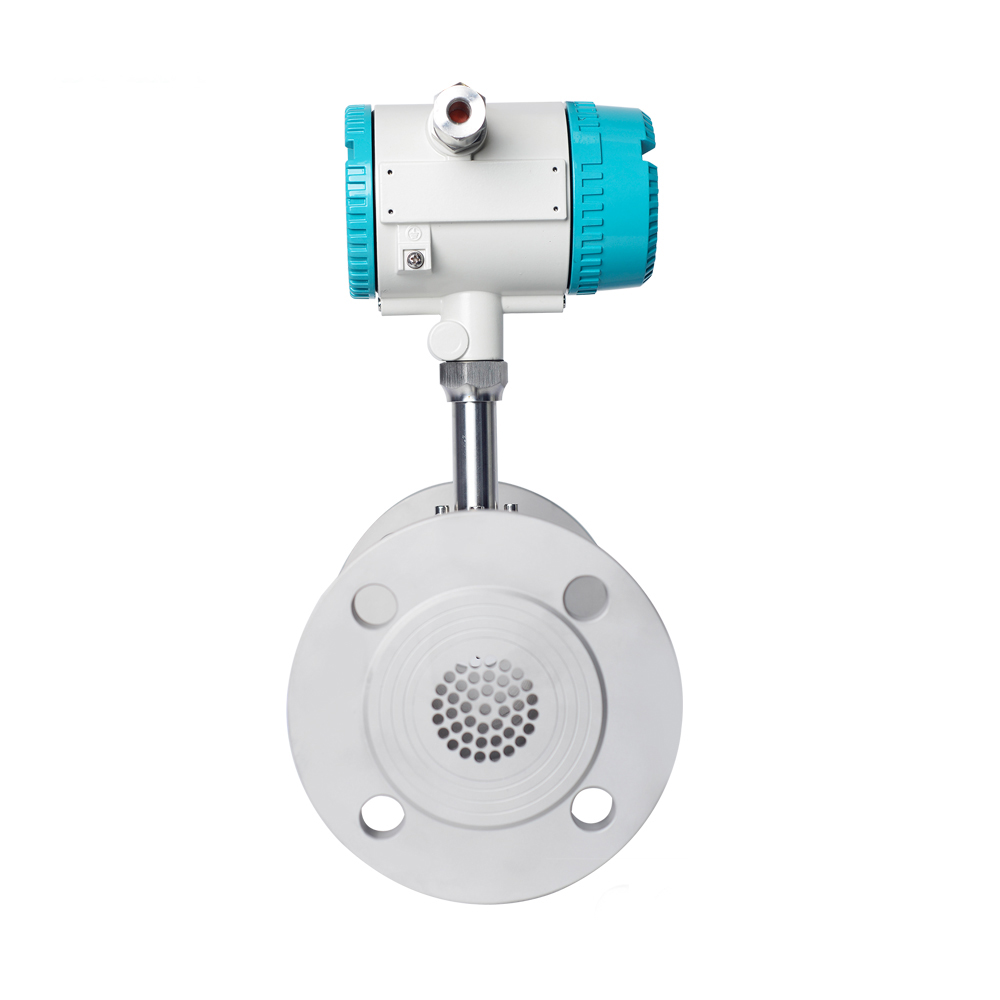Why is the thermal gas mass flowmeter not affected by pressure strength and temperature?
2022-07-25
We all know that the thermal gas flow meter is designed according to the principle of thermal diffusion, it adopts the constant temperature difference method so as to measure the gas accurately. The sensor of the thermal gas flow meter is composed of two reference and platinum resistance temperature difference sensor, when the instrument is working, a sensor uninterrupted measurement of the medium temperature T1; another sensor is automatically heated to a higher temperature than the medium temperature T2, the thermal gas flow meter is used for sensing the fluid flow rate, known as the speed sensor. The temperature △ T = T2 - T1, T2 > T1, and when there is a fluid flow through, due to the gas molecules collide with the sensor and take away the heat of T2, so that the temperature of T2 decreased, if you want to make the △ T to remain unchanged, we need to improve the power supply current of T2, the faster the gas flow rate, take away the heat is also the more the gas flow rate and the increase in the heat of the existence of a fixed function, which is the principle of constant temperature difference.
So why is it that thermal gas mass flow meters are not affected by temperature? It is due to the fact that the sensor temperature is about 30% higher than the medium temperature than the medium (ambient) temperature is always automatically constant, and naturally it is not subject to temperature compensation.
The thermal gas flow meter applicable medium temperature range of -40 ~ 220 ℃.

The basic principle of thermal gas mass flow meter is to detect the measured substance (e.g., air entering the engine) from the heat object (e.g., a heated wire, i.e., hot wire) to take away (transfer) the heat, and the heat transfer and how much mass flows through the heat object per unit of time is related to the component of the substance measured under the premise of no change, the transfer of heat and flow through the mass of the heat object is a single-value function.
Therefore, the thermal gas flow is a mass flow meter and the results are independent of the temperature, pressure and density of the measured medium. (This assumes, of course, that the composition of the measured medium remains unchanged). Thus, it has gained a lot of goodwill.
So why is it that thermal gas mass flow meters are not affected by temperature? It is due to the fact that the sensor temperature is about 30% higher than the medium temperature than the medium (ambient) temperature is always automatically constant, and naturally it is not subject to temperature compensation.
The thermal gas flow meter applicable medium temperature range of -40 ~ 220 ℃.

The basic principle of thermal gas mass flow meter is to detect the measured substance (e.g., air entering the engine) from the heat object (e.g., a heated wire, i.e., hot wire) to take away (transfer) the heat, and the heat transfer and how much mass flows through the heat object per unit of time is related to the component of the substance measured under the premise of no change, the transfer of heat and flow through the mass of the heat object is a single-value function.
Therefore, the thermal gas flow is a mass flow meter and the results are independent of the temperature, pressure and density of the measured medium. (This assumes, of course, that the composition of the measured medium remains unchanged). Thus, it has gained a lot of goodwill.
Share To:
Previous Post:
Next Post:
News
- Why is the thermal gas mass flowmeter not affected by pressure strength and temperature?
- What to do when a thermal gas mass flow meter fails?
- How are thermal gas mass flow meters used? What are the applications?
- Under what circumstances is the gas measurement need to be regulated compensated vortex flowmeter
- Why Is The Aister Thermal Gas Mass Flowmeter So Popular ?
- Gas turbine flowmeter manufacturers explain their main advantages in measurement
- Gas turbine flowmeter manufacturer Aister instrument field experience summary
- Aister Instrument Empowerment Conference








